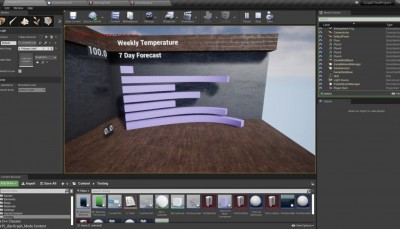How do you prepare for a curved ball

Author: Bob Pank#
Published 1st September 2011
Peter Savage looks at the effect of the Japanese tsunami and considers whether it has changed our perception of acquisition formats and how we could have planned for it
I was sitting with a client in Camden having a quiet lunch in a small Spanish caf. Very nice, very authentic and, as with all good cafs, Sky news was rolling (because no one was playing football anywhere). Breaking news: Japan hit by a large tsunami; one person feared dead.
As the saying goes, hindsight is a marvellous thing, so it is worth looking at the effect the wave had on the broadcast market and what lessons we can learn from this most unexpected curve ball.
Anticipating the worst
The first thing to note is that the effect on the media and broadcast industry was not as severe as everyone expected.
At NAB this year, the chatter centred around the anticipated short supply of components, which would make the production and delivery of almost any equipment, including from American manufacturers, impossible. Most feared that, until the northeast of Japan had been rebuilt there would be a worldwide shortage of electrical goods. For the broadcast industry many were predicting the death knell for tape formats.
Remarkable resilience
Instead, we witnessed a remarkable testament to the Japanese people and their culture. Less than six months after the tsunami, most manufacturers have good, if not absolutely normal, supply chains. Despite power shortages, damaged infrastructure and a lack, in some cases, of labour, the Japanese people demonstrated remarkable resilience in the speed at which they restored business as usual. I cannot name another country in the world that could have made this happen so quickly, after a disaster of this magnitude.
On the business front, it brought out the best here too, highlighting the resilience of the UK dealer market, as many dealers quickly adapted their business models to generate alternative or complimentary sources of income. I can illustrate with two examples:
First, one dealer took all its sales stock and put it into hire stock on the basis that, if stock was low in the sales market, then cross-hire would increase in the hire market. It anticipated, quite rightly, that there would be an increase in hire that would outweigh any loss of revenue from sales. The second dealer decided to maximise sales revenue from kit first – and then started to sell more solution-based products from the US – until supply of mainstream broadcast Japanese products resumed.
When I saw them last week, both were bullish about this year’s figures – which is certainly not how they had seen things six months ago.
What about the tsunami’s effect on SRW and tape formats?
We have definitely seen a shift away from demand for tape machines. A good gauge for the popularity of the tape based format is the second-hand value of tape decks. We all know the Digibeta story – a format that was worth its weight in gold for 10-15 years then, with tapeless and HDCam decks in the market, it plummeted overnight. In light of the shortage of SRW tapes and machines, over the last six months we have seen the second-hand dealer’s price moving downwards.
I have no more scientific way of monitoring this but, it does not bode well for tape based acquisition if dealers are unwilling to take a two to three year risk on the format. Considering tapeless SRW decks will be coming on to the market early next year and given the fact that much of the industry has embraced mastering in a tapeless format over the last six months, early indicators suggest that tape is gradually on its way out.
Planning ahead for the unexpected
So how can businesses plan for the unexpected? Of course, it’s impossible to predict exactly what will happen to you business if there were a tsunami or other natural disaster, but you can ensure that you are better equipped to react using scenario planning.
When starting out, the simplest forecasting model to use is the SWOT analysis. This model allows you to plot the market and environmental forces that will affect your business both now and in the future. For those of you that are unfamiliar with the model SWOT stands for; Strengths, Weaknesses, Opportunities and Threats.
A SWOT analysis is easy to produce. Using a blank sheet of paper, divide the page into quarters heading each quarter with one of the four categories – then start to build a list of environmental and market factors that affect your business.
What are its strengths - for example, repeat business from loyal clients, knowledgeable staff, top quality kit, efficient processes?
What about weaknesses - such as poor cash flow, expensive premises, seasonal work?
Opportunities might be - scope to collaborate with complementary businesses or special events that could lead to new business.
Threats could include inefficient suppliers and clients who don’t pay.
Include everything you can think of, brainstorming with colleagues to draw up a comprehensive list under each heading. Then take time to work out how you can capitalise on your business strengths and potential market opportunities, as well as reducing weaknesses and minimising threats.
If doing a SWOT test is a new concept to you, email me and I can talk you through a basic risk analysis of your business, free of charge. I can almost guarantee that there will be one thing that will jump out – and that could change your business for the better.
If you would like advice on risk analysis for your business, do email me on peter.savage@azule.co.uk and/or write to the TV bay editor. To read other articles in this series, visit our website: www.azule.co.uk.





























